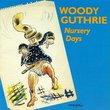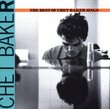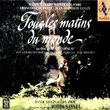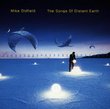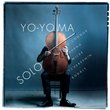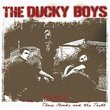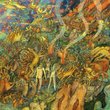| All Artists: Johann Sebastian Bach, Karl Richter Title: Bach: Organ Works Members Wishing: 0 Total Copies: 0 Label: Deutsche Grammophon Release Date: 3/8/2005 Genre: Classical Styles: Chamber Music, Forms & Genres, Sonatas, Variations, Historical Periods, Baroque (c.1600-1750), Classical (c.1770-1830), Instruments, Keyboard Number of Discs: 3 SwapaCD Credits: 3 UPC: 028947753377 |
Search - Johann Sebastian Bach, Karl Richter :: Bach: Organ Works
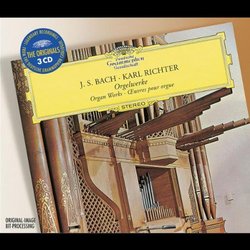 | Johann Sebastian Bach, Karl Richter Bach: Organ Works Genre: Classical
No Description Available. Genre: Classical Music Media Format: Compact Disk Rating: Release Date: 8-MAR-2005 |
Larger Image |
CD DetailsSynopsis
Product Description No Description Available. Genre: Classical Music Media Format: Compact Disk Rating: Release Date: 8-MAR-2005 Similarly Requested CDs
|
CD ReviewsTHE BEST OF BACH + THE BEST OF KARL RICHTER hugo saldias | denver,co,usa | 08/14/2005 (5 out of 5 stars) "Here we have the best organ works of J S BACH played by the well known director KARL RICHTER. He includes one Prelude and FUgue on each key form the original ones written for organ.So we can say we have here a Well Tempered Organ by JS BACH. I recommed it to all that want to listen the best of his organ works without having to buy a complete set.As I said there are Preludes and Fugues in all keys from c to b,Trio Sonatas,Choral Preludes from Orgelbuechlein,Schuebler and the Leipzig 18 sets, Choral Variations or Partitas and free pieces like the Canzona. The negative here is the booklet for different reasons: Mistakes on the organ building dates. No list of stops (ALL the original LPs included the list of stops on the back cover). The order of tracks in the cd is a complete non sense:instead of following the order of the originals LPs,or the order of the original taping during several years (the LPs were not recorded at the same time)the tracks come with an unexplained order,they not even watch for a combination:like including something between the trio sonatas,they put one after the other. The booklet indicates at the end pictures of the artist by Werner Neumeister,and there are no pictures at all in the booklet. It does not have any notes on the compositions included. Now we know that the DGG company has made other CDs with Richter including very complete booklets like that Passions,etc that have 70 or 80 pages,why then come with a set of cd with such a booklet Karl Richter made several trips from his Munich area to Denmark for these recordings trying to give a unified sample of J S Bach organ works.Just think that there are plenty of other organs in Germany to play and record,but he made as I said several trips to Copenhagen area to record these masterpieces of the organ. My favorite one is the Prelude and Fugue in e minor called the Wedge.The reason is the constant changing colors in the prelude and the virtuosity of the fuge,with its own colors making this piece a unique color masterpiece.Here Richter goes over all using a small instrument.All interested in the list of stops, can visit the organ builder website:Marcussen and look for the Jaegesborg organ, and will understand the reason why Karl Richter traveled overseas for several years, to sample the best organ works JSBach ever composed for the organ. I strongly recommed these CDs as the BEST OF BACH BY KARL RICHTER hugo_1950@yahoo.com" Old Friends, Rejuvenated D. DEGEORGE | Ellicott City, MD USA | 04/02/2007 (5 out of 5 stars) "I have known these recordings since they were first issued on LP in the 1960's, and I am more than delighted that they have been reissued on CDs with even cleaner and fuller sonics. I agree wholeheartedly with the other reviews that have thus far appeared here on Amazon and can add only one or two additional comments: Karl Richter's Bach performances, although they represented a departure from the over-romanticized treatments of Baroque music that had prevailed up to his time, were not the kind of trailblazing return-to-authenticity projects of Trevor Pinnock, Christopher Hogwood, and others, whose early-music-performance practices continue to be the standard today. Thus, in the matter of tempos, Richter may sound a little slow to some modern ears; however, he generally goes at a faster clip than his contemporary, E. Power Biggs, and his predecessor Albert Schweitzer, but not as fast as Anthony Newman and others who have followed in more recent years. His tempos and style are perfect for my taste, however: almost sassy compared with Biggs, yet much more tasteful than Fox (not that I am immune to enjoying the latter's excesses), and less frenetic than Newman. The recording quality is excellent and works in concert with some nicely pungent reeds in the organ to produce results of sparkling clarity. As a side note, I found it interesting that two of the three CDs contain over 81 minutes of music; I had thought 80 was the absolute limit (other than for MP3 discs)." Music for a Winter's Day Robin Friedman | Washington, D.C. United States | 02/26/2007 (5 out of 5 stars) "Between 1964 and 1980 Karl Richter (1926 --1981) made extensive recordings of Bach's organ music. These recordings have recently been reissued by Deutsche Grammophon in a 3-CD set as part of its "Legendary Recordings" series. This set is a joy for those who love the organ. It includes four hours of Bach's greatest music for the instrument, beautifully played. It was the ideal companion for me during this past snow and icebound weekend in Washington D.C.
Richter, of course, was best-known as a conductor of early music, but this set also shows him as a master of the organ. He made most of these recordings between 1964 and 1969 performing on a modern organ at the Jaegersborg Church near Copenhagen. The final three works in the collection date from 1978 and were recorded on a historic Silbermann organ at the Freiburg Cathedral. This instrument has a warmer sound than the modern instrument at Jaegersborg Church. This set captures Bach's organ music in all its variety, including its icy grandeur and its moments of meditative reflection. Bach's organ music is learned, inspiring, and emotional. Written for church performances, it reaches towards the transcendent, regardless of the listener's creed. The set includes a cross-section of the major works and styles in Bach's output for the instrument. For most listeners, some selections will be familiar while, for all but those listeners with broad familiarity with Bach's organ works, some will be new. The set opens with an arresting performance of the familiar Toccata and Fugue in d-minor, BWV 565 which some scholars do not attribute to Bach. The other work in this collection with widespread recognition, is the Schubler chorale arrangement of "Wachet auf, ruft uns die Stimme," which Ricther takes in a meditative, slow tempo. Richter also performs several additional preludes including: "Kommst du nun, Jesus, von Himmel herunter", BWV 650 and a later prelude from a set of 18, "Schmucke dich, o liebe Seele", BWV 654, which also receives a deeply introspective interpretation. Of the final works Richter recorded, two are late chorales, "O Gott, dur frommer Gott", BWV 767 and "Sei gregusset, Jesu guting", BWV 768. The flowing c minor Passacaglia and Fugue, BWV 582 was one of the highlights of this CD. This is passionate, lyrical and seeking music with an opening movement written in the same style as Pachbel's familiar Canon. The large-scaled Toccata and Fugue in F major, BWV receives a compelling performance, as does the G minor Fantasie and Fugue, BWV 552. Other two-movement works include the prelude and Fugues in D major, BWV 532, a-minor, BWV 543, E flat major, BWV 552, e minor, BWV 548 and B minor, BWV 544. In addition to these grand works, the set also includes three of Bach's trio sonatas for organ, BWV 525, 526, and 529. These works are each in three movements with fast outer movements surrounding a reflective slow movement. These works tend to be less austure than Bach's other compositions for the organ and suggest, in places, the galant, graceful style of musical composition that would soon replace Bach's baroque. Richter plays this music with discipline and romantic feeling. He makes full and effective use of the tonal qualities of his instruments, and his playing is beautifully recorded. The liner notes, unfortunately, are sparse and not particularly informative. I am grateful for a winter weekend which left me housebound to draw inspiration from this glorious music. Lovers of Bach's organ music will want to return many times to Richter's performances. Robin Friedman" |

 Track Listings (15) - Disc #1
Track Listings (15) - Disc #1